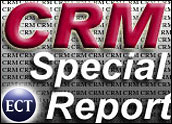
Return on investment figures for a Software as a Service implementation can be surprisingly difficult to generalize. One measure often cited in the industry is that one year is a reasonable period in which firms can expect to see a project deliver returns, with the larger-sized investments bringing home results faster than smaller-cost deployments.
Despite the ambiguity, SaaS vendors, especially in the early days of the early 2000s, were more apt to emphasize ROI to potential customers than other benefits. That is changing, as more companies come to a marketing pitch already familiar with the dollar savings that SaaS can deliver — and as more vendors are finding that closing a sale means differentiating their applications in other ways.
CEOs and the Law of Unintended Benefits
In a new report by Beagle Research,Managing Principal Denis Pombriant outlines the unintended benefits — or the applications’ intangible strengths — that SaaS is bringing to customers. The report is based on conversations with CEOs at top SaaS vendors including Zach Nelson, CEO of Netsuite; RightNow’s Greg Gianforte; Mike Braun, CEO of IntAcct; Anthony Lye, senior vice president of CRM at Oracle; Brian Zanghi, CEO of Kadient; Michael Torto, CEO of Centive; David Thompson, head of Genius.com; Marc Benioff of Salesforce.com; Mike Bauer of Intacct; and Brian Halpin, vice president and general manager of SageCRM.
Pombriant told CRM Buyer that he specifically asked the executives not to discuss ROI. “We wanted to strip that away and talk about the other reasons a company might want to look at an SaaS.”
The result of the high-level brain picking? Several areas in which SaaS users are finding advantages that on-premise software does not offer: customer intimacy and collaboration, market intelligence, Internet connectivity, reduced risk, mobility, business latency, customer data, system availability and functional latency.
WebNecessary Applications
Some of the points tease out subtle new developments under way in the space. Internet connectivity, in this instance, does not refer to the value proposition of using the Internet as a delivery medium — one of the early talking points of SaaS. Rather, Pombriant says in the report, it refers to a new kind of application, which he is defining as WebNecessary.
These apps integrate and leverage the Internet — and that is part of the value proposition customers receive. These applications tend to support innovative business processes that, in most cases, could not be easily supported any other way and are collaborative, bringing together people from disparate roles, geographies and organizations to participate in these business processes.
Driving Innovation
Other conclusions — driving innovation for instance — are fairly obvious but bear repeating, given the tremendous value add it brings to customers. For instance, Pombriant noted that SaaS vendors have been able to deliver applications for markets where the demand was relatively thin and thus not profitable for an on-premise vendor to develop.
“Whether a company uses applications developed by third parties or builds applications in-house using on-demand tools, on-demand technologies lower the cost and risk profiles associated with these efforts and enable more people to take a chance and succeed at building something that is instrumental to their companies’ successes,” he wrote.
“Where a company might have relied on a spreadsheet-based application in the past, it now has the ability to build a solution that is based on a database and integrates well with other organizational data,” he added.
Web 2.0 Augmenting SaaS
The report, written for both C-level decision makers at buying organizations as well as the C-level marketing executive at a SaaS company, ends with the observation that the growing use of Web 2.0 technologies — social networking for instance — to augment on-demand CRM is causing both vendors and customers to reconsider whole business processes.
“We are finding enterprising vendors and end users building new and innovative applications to support these processes and additional unforeseen benefits are the result,” Pombriant wrote. “This ongoing ‘virtuous circle’ of benefits is one reason for on-demand technology’s continuing popularity and further evidence that SaaS is not a fad but a trend with a long way to run.”
Click here to download the full report.






















































